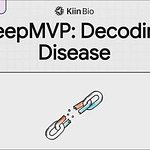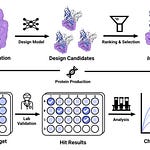Genentech, in collaboration with Stanford University, has unveiled SpatialAgent, a groundbreaking autonomous AI agent designed to transform spatial biology research. By integrating large language models (LLMs) with dynamic tool execution and adaptive reasoning, SpatialAgent streamlines workflows from experimental design to hypothesis generation, enabling unprecedented efficiency and discovery in tissue analysis.
Key Features of SpatialAgent:
Cross-domain integration:
Unifies multimodal data (gene expression, anatomical images, cell-cell interactions) into a single framework
Processes datasets spanning human brain, heart, and mouse colitis models (2 million+ cells)
Autonomous and collaborative workflows:
Operates in autonomous mode (end-to-end task execution) or co-pilot mode (interactive refinement with scientists)
Combines predefined templates with adaptive reasoning, reducing manual intervention
Advanced toolset:
Integrates domain-specific tools (e.g., scRNA-seq analysis, ligand-receptor validation) and external databases (PanglaoDB, CellMarker2)
Generates custom code for novel analyses using Python/Scanpy
Performance Highlights:
Gene panel design: Outperformed 90% of human experts and computational methods (6–47% improvement in spatial prediction accuracy)
Cell/tissue annotation: Matched expert-level accuracy in heart tissue analysis while reducing annotation time by 80%
Hypothesis generation: Uncovered novel TGF-β-driven fibroblast-pericyte interactions in colitis, overlooked in original studies
Applications in Biomedical Research:
Precision gene panel design: Optimizes spatial transcriptomics experiments for cancer and neurobiology
Automated tissue annotation: Maps cell types and niches in developing organs with subcellular resolution
Dynamic interaction analysis: Identifies disease-specific cell communication networks (e.g., immune-stromal crosstalk in IBD)
Wet-lab integration: Guides experimental design (e.g., enhanced Xenium panels for prostate cancer models)
Future Directions:
Expanding domain-specific knowledge for rare cell types and emerging biological processes
Implementing uncertainty quantification to prioritize high-confidence predictions
Developing multi-agent systems for distributed task execution
Why it matters: SpatialAgent bridges the gap between AI automation and human expertise, democratizing complex spatial analyses and accelerating discoveries in precision medicine. By reducing manual workflows from weeks to hours, it empowers researchers to focus on creative exploration and translational insights.
Code and tutorials are available at GitHub.











